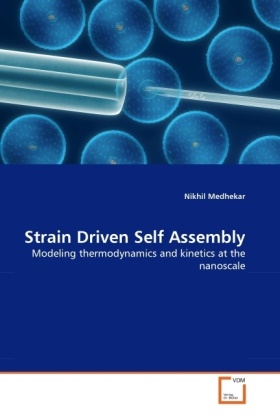Read more
An appealing approach to manufacturing future generation nanoscale devices envisioned for electronic, magnetic and photonic applications is to exploit the natural tendency of small material clusters to self-organize into well-defined patterns. While strain- driven self-assembly is widely viewed as a promising technique for patterning at the nanoscale, to follow this approach and create structures in a desired manner, a reliable means to engineer the characteristic size and shapes that the clusters adopt during self- assembly is essential. Motivated by a significant potential technological impact, a systematic elucidation of how long-range elastic interactions couple with surface and bulk thermodynamics and kinetics to control shape, size and compositional patterns assumes a paramount importance. The work presented here describes a detailed analysis of evolution of morphological and compositional patterns in various strain-driven self-assembled systems. The examples include alloy quantum dots and 2D patterns such as surface stress domains and epitaxial nanowires.
About the author
Nikhil Medhekar graduated from the Indian Institute of Technology, Bombay in 2002 with MTech in Mechanical Engineering. He then moved to Brown University, USA to pursue further education and received his ScM in 2006 and PhD in 2009. He is currently working as a faculty in the Department of Materials Engineering at Monash University, Australia.

